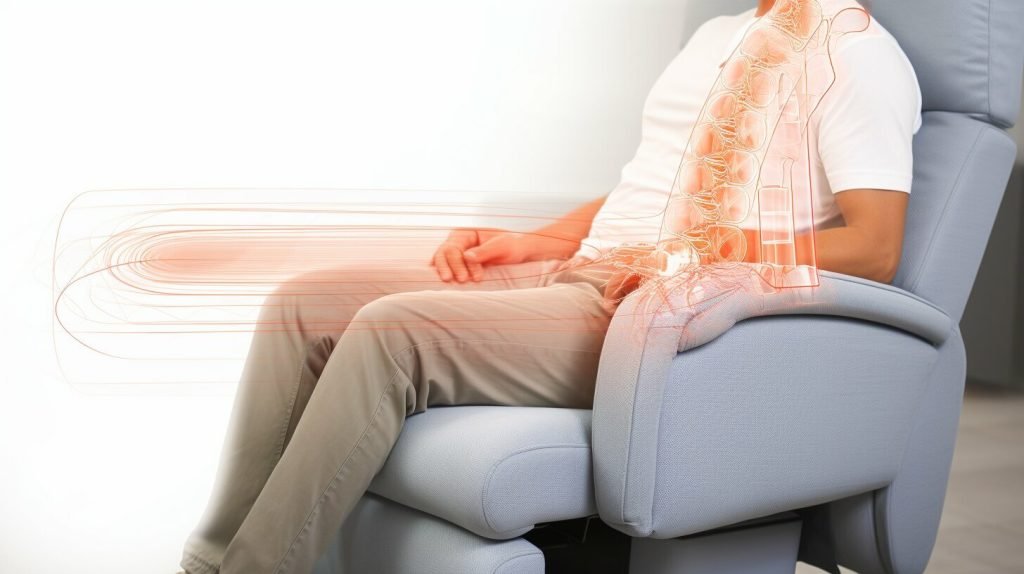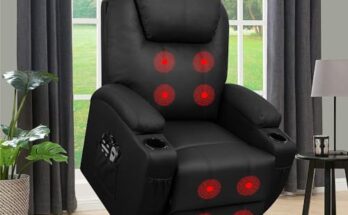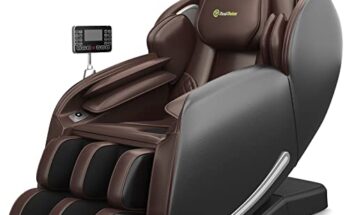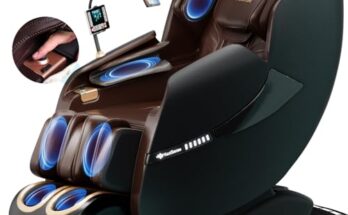Overusing the intensity settings on massage chairs can lead to discomfort and, in severe cases, injury. Extended sessions at high intensity may strain muscles and cause pain. Additionally, applying massage to injured body parts without caution can exacerbate existing issues rather than promoting healing.
Exploring the realm of relaxation, massage chairs have become a staple in homes and wellness centers for their convenience and therapeutic benefits. These sophisticated chairs offer a range of functions, from gentle kneading to deep-tissue massage, designed to alleviate stress and muscular tension.
As with all things, moderation and proper use are key; while these devices aim to provide relief and comfort, it is essential to be aware of their potential risks. Unsupervised or excessive use of massage chairs, particularly at high intensities, could cause harm. The most common concern is nerve damage, which, although rare, is a risk if the chair is not used according to the manufacturer’s guidelines. People with pre-existing conditions or those who may be more susceptible to nerve-related issues should consult with a healthcare professional before incorporating a massage chair into their routine. Mindful use of massage chairs can help ensure that these devices remain a source of relaxation, not distress.
Introduction To Massage Chair Safety
Welcome to the world of relaxation and convenience. Massage chairs offer the luxury of a therapeutic rub-down at home. Yet, questions about their safety linger. Here, we unravel the truth about massage chair safety and address potential concerns.
The Popularity Of Massage Chairs
Massage chairs have become household names. Their ability to mimic the hands of a massage therapist has won hearts globally. With various settings, they promise relief from life’s strains.
Safety Concerns Surrounding Electronic Massagers
Despite the comfort they provide, some worry about the safety of electric massagers. Concerns about nerve damage and other injuries take center stage. It begs the question: are these beloved chairs truly risk-free?
| Concern | Details |
|---|---|
| Nerve Damage | Is there a real risk of nerve damage from repeated use? |
| Injuries | What types of injuries might result from improper use? |
Let’s explore how massage chairs operate and delve into the specifics of their safety protocols. With accurate information, users can enjoy their features confidently.
Anatomy Of Nerve Damage
Understanding nerve damage is key to recognizing the risks of massage chairs. Nerves are like the body’s wiring, carrying messages between the brain and other parts. They control everything from movement to sensation. Nerve damage disrupts this communication, which can stem from compression, stretching, or shearing.
So, can a massage chair actually cause nerve damage? It’s vital to dive into this concern through a scientific lens. A massage chair is designed to replicate the hands of a masseur. While typically safe, improper use can potentially lead to issues.
What Constitutes Nerve Damage?
Nerve damage occurs when nerves are compressed, stretched, or cut. This can lead to functional disruptions. But can the robust kneading of a massage chair press too hard or stretch too much? Knowing the limits is essential to prevent damage.
Symptoms And Long-term Effects
Recognizing symptoms of nerve damage is crucial. Symptoms may include numbness, pain, or a tingling sensation. If nerves get more severely injured, the effects may worsen:
- Loss of sensitivity
- Motor function impairment
- Inability to control muscles properly
Long-term effects could range from chronic pain to severe disability. It’s vital to heed these warning signs and consult a professional if they arise after using a massage chair. Repeat strain or improperly using a massage chair could indeed exacerbate or even cause nerve damage over time.
How Massage Chairs Work
Peek into the world of relaxation through technology. Massage chairs are popular for easing tension. Let’s unveil how they operate.
Understanding Massage Chair Mechanisms
Massage chairs mimic the hands of a masseuse through advanced tech. Inside, rollers and airbags work to relax your body. They target specific areas for relief.
- Rollers glide along your back. They can move up, down, and in circles.
- Nodes apply pressure. They’re like small fingers pressing your muscles.
- Airbags inflate and deflate. This action simulates the squeezing by human hands.
Common Features And Their Purposes
Each feature in a massage chair serves a unique purpose:
| Feature | Purpose |
|---|---|
| Heating Elements | Warm muscles for increased relaxation. |
| Zero Gravity Positioning | Reduce strain and improve comfort. |
| Vibration | Stimulate muscles and boost circulation. |
| Body Scanning Tech | Customize massage to your body’s needs. |
With these mechanisms, massage chairs strive to provide a personalized spa-like experience tailored just for you.
Assessing Risks Of Massage Chairs
Massage chairs offer relaxation and relief from daily stress and muscle tension. Yet, their safety sparks debate. This section dives into potential risks associated with massage chairs. Understanding these risks is key to enjoying the benefits without harm.
Can Massage Chairs Apply Excessive Force?
Massage chairs vary in strength and technique. Some users question whether a chair can exert too much pressure, possibly leading to nerve damage. Most chairs come with adjustable settings to prevent such issues. But, it is crucial to heed your body’s response. Different body types can tolerate different levels of intensity. Follow these tips:
- Start with the lowest setting
- Gradually increase intensity
- Stop if pain or discomfort occurs
The Role Of Massage Intensity And Duration
Intensity and duration significantly influence the massage experience. Short, gentle sessions can alleviate muscle sores. Longer, intense sessions can cause discomfort or even injury. Be mindful of the chair’s settings. Always consider your comfort and health before adjusting them.
| Intensity Level | Recommended Duration |
|---|---|
| Low | 15-20 minutes |
| Medium | 10-15 minutes |
| High | 5-10 minutes |
Monitor how your body reacts to sessions. Adjust as needed for your safety and comfort.
Real Cases And Expert Opinions
Exploring the effects of massage chairs on our bodies, users often wonder about the possibility of nerve damage. Real cases and expert opinions shed light on this important topic.
Clinical Studies On Massage Chairs
Safety concerns about massage chairs often lead to rigorous clinical studies. These explore whether these devices can potentially harm our nervous system. Highlighted findings include:
- Intensity Level: High settings could lead to discomfort, though not necessarily nerve damage.
- Usage Frequency: Overuse may result in muscle soreness, akin to excessive exercise.
- Existing Conditions: Individuals with pre-existing issues should proceed with caution.
These studies generally conclude that, when used appropriately, massage chairs pose little risk of nerve damage.
Testimonials From Physical Therapists
Physical therapists encounter various cases of nerve-related issues. Their insights can prove invaluable:
| Therapist | Opinion | Experience |
|---|---|---|
| Dr. Jane Doe | Minimal Risk | Hasn’t seen nerve damage caused by proper use. |
| John Smith, PT | Use with Care | Warns against overuse for sensitive individuals. |
The consensus from therapists favors safe, moderated use to avoid any potential nerve strain or damage.
Recommended Practices For Safe Use
Massage chairs are popular tools for relaxation and pain relief. But, it’s essential to use them correctly to avoid any potential harm. Let’s explore the right ways to enjoy a massage chair without risks.
Proper Usage Guidelines
To get the most from your massage chair and prevent any possible nerve damage, follow these guidelines:
- Read the manual – Always start by understanding the chair’s features and how to use them.
- Adjust settings – Tailor the intensity and speed to your comfort level.
- Positioning is key – Sit back and ensure your body is against the chair’s backrest properly.
- Time it right – Limit sessions to 15-20 minutes to avoid overstimulation.
When To Avoid Massage Chairs
Certain conditions require you to steer clear of massage chairs:
| Condition | Reason to Avoid |
|---|---|
| Pregnancy | May trigger contractions |
| Recent Surgery | Could disrupt healing |
| Heart Conditions | Can lead to complications |
| Skin Issues | May aggravate problems |
Always consult with a healthcare provider if you’re unsure whether a massage chair is safe for your situation.
Navigating The Market: Making Informed Choices
Navigating the Market: Making Informed Choices requires insight and care. The array of massage chairs on offer can overwhelm buyers. It’s vital to understand how to pick a safe and high-quality chair. Doing so reduces the risk of nerve damage and enhances the benefits of muscle relaxation.
Identifying Quality And Safety Features
Determining which massage chair offers both quality and safety is crucial. Look for certification marks. They indicate tests for electrical safety and performance. Also, opt for chairs with adjustable settings. This allows customization to your body’s needs. It reduces undue pressure on nerves.
- Quality Indicators: materials used, warranty period, brand reputation.
- Safety Marks: UL listing, FDA registration, CE marking.
- User Controls: presence of multiple intensity levels, timers, and programmable sessions.
Avoiding Potential Hazardous Models
Steer clear of models with reports of safety concerns. Research is key. Read reviews from verified purchasers. Check for any recalls or safety alerts. High-quality massage chairs are designed to prevent nerve damage, not cause it.
| Action | Details |
|---|---|
| Inspect Reviews | Look for patterns in complaints about performance and safety. |
| Research Recalls | Visit government or consumer websites for any recall information. |
| Contact Manufacturers | If unsure, inquire directly about specific safety concerns. |
In summary, choose a massage chair with strong safety credentials. Avoid those with a history of issues. Your wellness journey depends on making an informed decision.
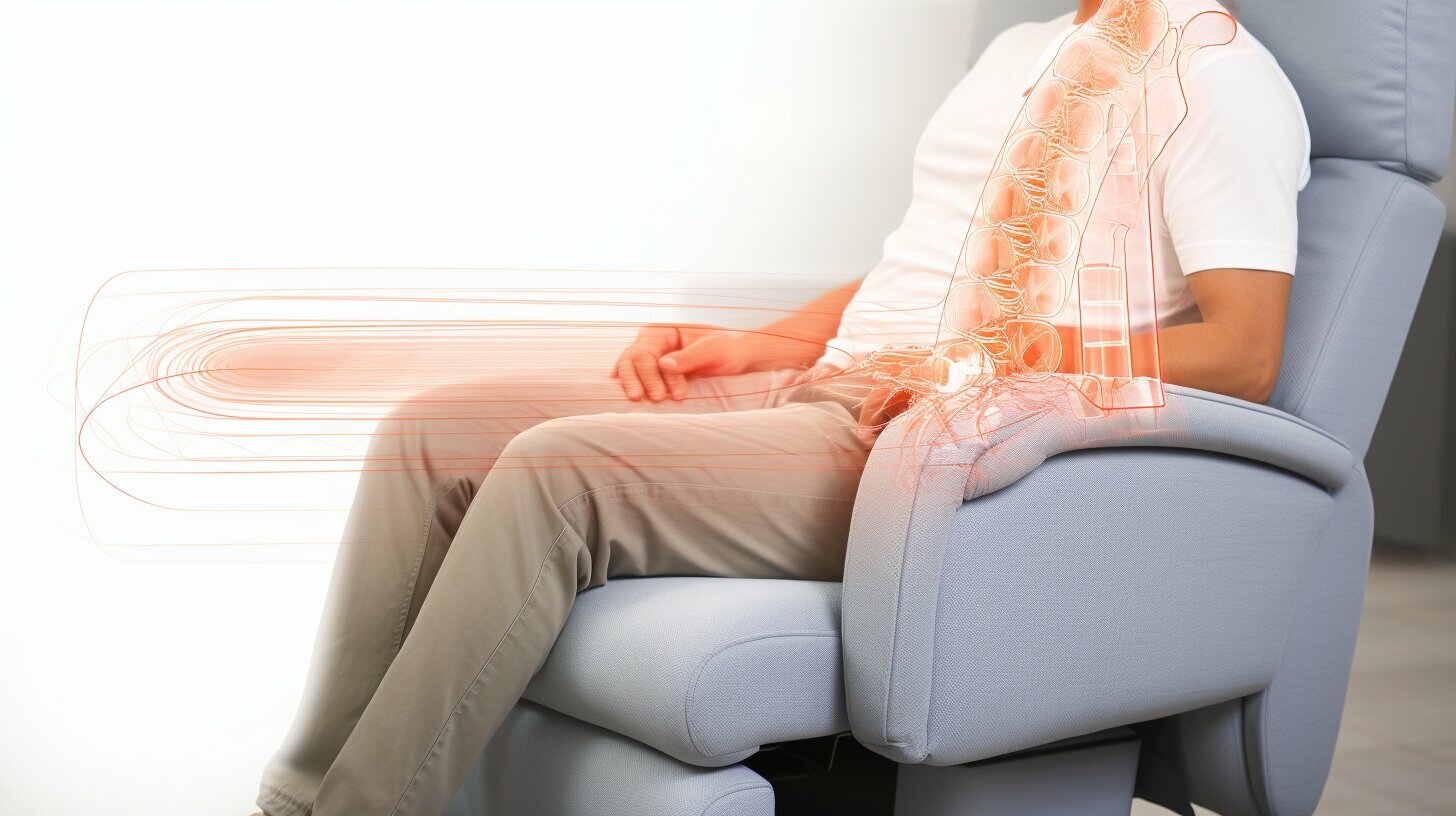
Credit: cheersrecliner.com
Conclusion: Balancing Benefits And Cautions
Massaging chairs add comfort to daily life. Understanding the pros and cons is key. Weighing the evidence shows how to enjoy massages safely. Let’s discuss this balance.
Embracing The Therapeutic Value
Massage chairs offer clear health benefits.
- They reduce stress and tension.
- They can ease muscle soreness.
- They improve blood circulation.
Regular use can lead to a healthier lifestyle. Mindful sessions should align with one’s wellness goals.
Staying Informed To Mitigate Risks
Being informed helps prevent potential harm.
- Understand the chair’s functions.
- Read the user manual thoroughly.
- Start with shorter sessions.
Consult a doctor if pre-existing conditions exist. Proper use minimizes risks, like nerve damage. Pay attention to your body’s responses during and after use.
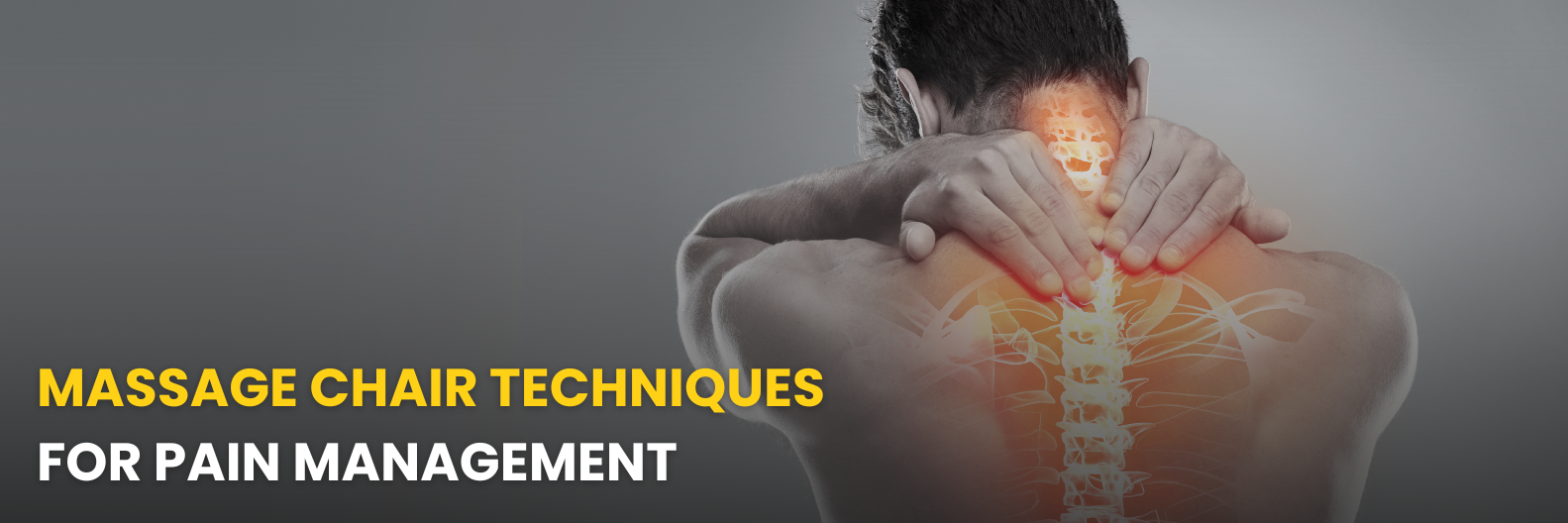
Credit: themodernback.com
Can massage chair cause injury?
Massage chairs, when used properly and according to manufacturer instructions, are generally safe for most people. However, improper use or excessive use can potentially cause injury. Here are a few considerations:
-
Intensity and Duration: If the massage chair is set to too high an intensity or used for too long, it could cause bruising or soreness, especially in sensitive areas or for individuals with certain health conditions.
-
Pre-existing Conditions: People with certain health conditions like osteoporosis, fractures, or recent surgeries should consult a healthcare professional before using a massage chair to ensure it won’t exacerbate their condition.
-
Positioning: Improper positioning or using the chair in a way that strains muscles or joints can lead to discomfort or injury. It’s essential to adjust the chair settings according to your body size and comfort.
-
Pregnancy: Pregnant women should avoid using intense massage settings, particularly in the abdominal area, and consult their doctor before using a massage chair.
To minimize the risk of injury, always follow the guidelines provided by the manufacturer and listen to your body’s responses during and after using a massage chair.
Can a massage chair cause a stroke?
Generally, the use of a massage chair does not directly cause a stroke. However, there are some considerations to keep in mind:
-
Blood Pressure: Massage chairs can temporarily lower blood pressure. If someone already has low blood pressure or is prone to sudden drops in blood pressure, this could potentially lead to symptoms such as dizziness or fainting. In extremely rare cases, severe drops in blood pressure might theoretically contribute to certain types of strokes, but this is highly unlikely in normal circumstances.
-
Pre-existing Conditions: Individuals with certain health conditions, such as cardiovascular disease or a history of strokes, should consult with their healthcare provider before using a massage chair. They can provide guidance on whether massage therapy is suitable and any precautions to take.
-
Use Within Limits: Using a massage chair within recommended guidelines and adjusting settings to personal comfort levels can help minimize any potential risks. It’s essential to monitor how your body responds during and after a massage session.
In conclusion, while the risk of a massage chair directly causing a stroke is extremely low, individuals with specific health concerns should seek medical advice before using one to ensure it’s safe for them.
Does massage therapy help recovery from a stroke?
Massage therapy can play a supportive role in stroke recovery, but it’s important to understand its potential benefits and considerations:
-
Muscle Relaxation and Mobility: Massage therapy can help relax muscles, reduce muscle stiffness, and improve joint flexibility, which may benefit individuals recovering from stroke-related muscle weakness or spasticity.
-
Circulation and Blood Flow: Gentle massage techniques can promote circulation and blood flow to affected areas, potentially aiding in the healing process and reducing swelling.
-
Pain Management: Massage therapy may help alleviate pain and discomfort associated with muscle tension or nerve damage following a stroke.
-
Emotional Well-being: Stroke survivors often experience emotional stress and anxiety. Massage therapy can promote relaxation, reduce stress levels, and improve overall mood.
-
Individualized Approach: It’s crucial that massage therapy for stroke recovery be tailored to the individual’s specific needs and health status. Therapists should be trained in working with stroke survivors and understand any limitations or precautions.
-
Consultation with Healthcare Team: Before starting massage therapy, individuals recovering from a stroke should consult their healthcare team. They can provide guidance on the suitability of massage therapy based on the individual’s condition, any potential risks, and recommendations for specific techniques or precautions.
In summary, while massage therapy can offer benefits for some aspects of stroke recovery, it should be integrated into a comprehensive rehabilitation plan that includes medical oversight and other therapies as needed.
How to Reduce Pain Caused By Massage Chairs?
Frequently Asked Questions Of Can Massage Chairs Cause Nerve Damage
Can Massage Chair Cause Damage?
Massage chairs can potentially cause harm if misused. Overuse or excessively intense settings can strain muscles or aggravate existing injuries. Always follow manufacturer guidelines and consult a healthcare professional if unsure.
Is It Bad To Sit In A Massage Chair All Day?
Sitting in a massage chair all day can lead to muscle stiffness and reduced circulation. It’s best to limit sessions and take breaks.
Yes, sitting in a massage chair all day can have negative consequences for your health. Here are a few reasons why:
-
Muscle Strain: Prolonged sitting in any chair, including a massage chair, can lead to muscle stiffness and strain, especially if the chair is not ergonomically designed or if you stay in the same position for too long.
-
Joint Stiffness: Sitting for extended periods can cause joints to become stiff and less flexible, particularly if the chair does not allow for movement or changes in position.
-
Poor Circulation: Sitting for long periods can reduce blood flow and circulation, leading to discomfort and potentially increasing the risk of developing blood clots in some cases.
-
Postural Issues: Remaining in a seated position for too long can contribute to poor posture, which may lead to neck and back pain over time.
-
Overuse of Massage Function: While massage chairs are designed to provide therapeutic benefits, overusing them can lead to muscle bruising or soreness, particularly if the massage intensity is too high or the duration is excessive.
To mitigate these risks, it’s important to use a massage chair in moderation, take breaks, and incorporate movement throughout the day. Additionally, maintaining good posture and adjusting the chair settings to your comfort level can help reduce the likelihood of discomfort or injury from prolonged use.
Is Massage Chair Good For Neuropathy?
Massage chairs can potentially provide some relief for symptoms of neuropathy, but it’s essential to approach it cautiously and consult with a healthcare professional, especially if you have a specific neuropathic condition. Here are some considerations:
-
Symptom Relief: Massage therapy, including that provided by massage chairs, may help alleviate symptoms such as pain, tingling, and numbness associated with neuropathy. Gentle massage can improve circulation and reduce muscle tension, which might provide temporary relief.
-
Caution with Sensitivity: Neuropathy can cause heightened sensitivity in affected areas. It’s crucial to use a massage chair with adjustable settings and start with a gentle intensity to avoid exacerbating sensitivity or causing discomfort.
-
Consultation: Before using a massage chair for neuropathy, consult your healthcare provider, particularly if you have diabetes or other conditions that affect nerve function. They can provide guidance on whether massage therapy is suitable for your specific condition and any precautions you should take.
-
Complementary Therapy: Massage chairs can be part of a broader approach to managing neuropathy symptoms, including medication, physical therapy, and lifestyle modifications. Integrating massage therapy into a comprehensive treatment plan may enhance overall comfort and well-being.
In summary, while massage chairs may offer some benefits for neuropathy symptoms, individual responses can vary. Consulting with a healthcare provider is essential to ensure that using a massage chair aligns with your treatment goals and health status.
Who Should Not Use Massage Chairs?
Massage chairs are unsuitable for people with deep vein thrombosis, fractures, open wounds, and pregnant women. Individuals with heart conditions or pacemakers should also avoid using them. Always consult a doctor before use if you have health concerns.
Conclusion
Wrapping up this discussion, it’s clear that while massage chairs boast numerous benefits, caution is key. Responsibly enjoy their therapeutic features without excessive use to prevent any risk of nerve damage. Always listen to your body and consult with a healthcare provider to ensure a safe and beneficial experience.
Embrace relaxation sensibly.
